#DorleControls
Explore tagged Tumblr posts
Text
Internal Combustion Engine
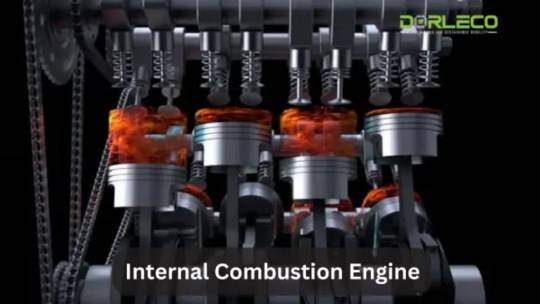
Introduction
For than a century, internal combustion engine (ICEs) have served as the foundation of contemporary transportation. More than 250 million vehicles in the US are powered by internal combustion engines (ICEs), which are renowned for their durability, fuel economy, and mechanical dependability. Globally, internal combustion engines (ICEs) have transformed transportation and power generation, changing everything from freight trucks to industrial equipment, and from small cars to airplanes. However, in the era of resource depletion, climate change, and carbon-neutral policies, ICEs are increasingly being scrutinized. The increasing popularity of electric vehicles (EVs) and sustainable fuels is putting the traditional internal combustion engine at a turning point. This blog discusses ICE classifications, components, operating principles, benefits, drawbacks, applications, and the evolving role of ICEs in a green energy future.
An internal combustion engine: what is it?
One kind of heat engine is an internal combustion engine, where fuel is burned inside a closed space. It converts the chemical energy of the fuel directly into mechanical energy, which drives machinery or propels an automobile ahead. Compared to external combustion engines (such as steam engines), internal combustion engines (ICEs) burn fuel inside the engine block, resulting in a more compact design and higher energy conversion efficiency.
Internal Combustion Engine Classifications
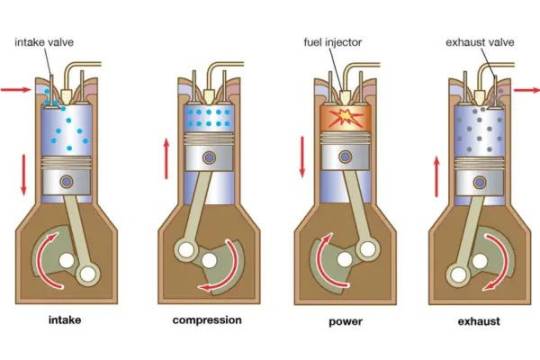
The ignition and combustion processes are the primary classification criteria for ICEs.
Engines with continuous combustion
These engines are constantly fed fuel and oxidizers, which create a steady flame. Among the examples are:
Gas-powered turbines
Jet Engine
They are known for their quick operations and consistent output, and they are mostly used in industrial and aviation environments.
Internal Combustion Engine Classifications
The ignition and combustion processes are the primary classification criteria for ICEs.
1. Engines with continuous combustion
These engines are constantly fed fuel and oxidizers, which create a steady flame. Among the examples are:
Gas-powered turbines
Jet Engine
They are renowned for their quick operations and consistent output, and they are mostly used in industrial and aviation environments.
2. Intermittent Combustion Engines (Reciprocating Engines)
Reciprocating engines, or intermittent combustion engines
These engines ignite a fuel and air mixture using timed cycles. There are two primary kinds:
In gasoline-powered spark-ignition engines, a spark plug is used to ignite the engine after compression.
Compression-ignition diesel engines start by heating compressed air and then injecting fuel.
Working Principle of ICEs
The basic concept is that a piston is moved by mechanical energy created when fuel burns in a cylinder. Most internal combustion engines use a four-stroke cycle, which includes the following steps, to accomplish this:
1. Stroke of Intake
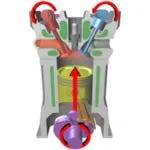
The air-fuel mixture (or just air in diesel engines) enters the combustion chamber at the beginning of the intake stroke as the piston falls and the intake valve opens.
2. Stroke by Compression
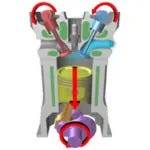
The piston then moves upward during the compression stroke, compressing the air-fuel mixture. Combustion is then started by a spark plug in gasoline engines or a fuel injector in diesel engines.
3. The Stroke of Power

Then, as the power stroke starts, the ignited air-fuel mixture pushes the piston downward, creating mechanical work that turns the crankshaft.
4. Stroke of Exhaustion

Consequently, during the exhaust stroke, the piston pushes the burned gasses out through the open exhaust valve. 🔁 With only one power stroke every two crankshaft revolutions, this cycle is continuously repeated in four-stroke ICEs.
Key Components of an Internal Combustion Engine
Understanding ICE anatomy helps grasp its function better:
ComponentFunctionCylinder HeadThe cylinder head contains the camshafts, injectors, spark plugs, and valves.Engine BlockContains pistons, crankshaft, and cylinders. Facilitates coolant flow.PistonA piston moves up and down within the cylinder to transmit force.CrankshaftConverts piston motion into rotary power.Combustion ChamberWhere fuel and air combine and ignite is the combustion chamber.
Internal Combustion Engine Benefits
Despite EVs’ growing popularity, ICEs still offer some important advantages: 🔧 Mature Technology: After decades of development, ICEs are incredibly reliable. 🛞 Its excellent power-to-weight ratio makes it ideal for mobile applications. 🏎️ Fast Start-Up: There is no waiting time, in contrast to steam engines. 💡 Fuel Types: Uses gasoline, diesel, natural gas, biodiesel, and ethanol. ⚙️ Compact Design: Easily integrated into a variety of vehicle sizes. 🔁 Reduced Maintenance: Routine upkeep is simple and available.
Disadvantages of Internal Combustion Engines
As stricter emission norms and environmental mandates take effect, the shortcomings of ICEs are becoming more apparent. 🌍 Environmental Impact: High emissions of CO₂ and NOx. 🧯Limited Fuel Sources: Reliant on fossil fuels. 💸 Fuel Price Fluctuations: Diesel and gasoline prices are unpredictable. 📢 Noise and Vibration: Greater than those of electric motors. 🔩 Energy Loss: Only around 25–30% of the fuel’s energy is converted into motion, with the remainder lost as heat.
Real-World Applications of ICEs
ICEs remain dominant in several sectors:
ApplicationEngine TypeExamplesAutomotiveGasoline & DieselCars, SUVs, MotorcyclesHeavy TransportDieselTrucks, Buses, LocomotivesMarineDiesel & Gas TurbinesCargo Ships, Patrol BoatsAviationJet Engines & TurbinesAirliners, DronesIndustrialStationary Gas EnginesGenerators, Pumps
Future of Internal Combustion Engines
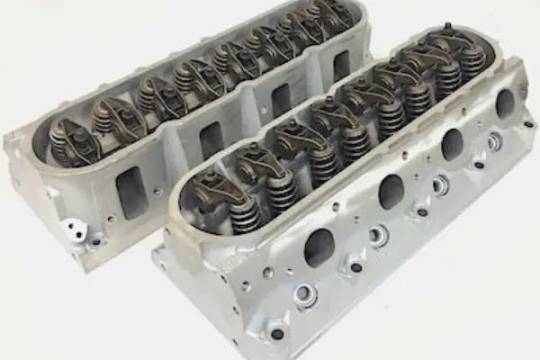
The ICE sector is developing quickly as net-zero targets get near. ICEs are becoming cleaner, more effective devices rather than going extinct.
1. Electrification and Hybridization
Electric motors are added to plug-in hybrids, full hybrids, and mild hybrids to improve overall efficiency, which increases mileage and lowers pollution.
2. Alternative Fuels Hydrogen: No emissions from the tailpipe.
In contrast to fossil fuels, renewable resources are used to produce biofuels. Designers create carbon-neutral synthetic fuels to be carbon neutral.
3. Engine Control Units (ECUs) Driven by AI
In order to increase economy, advanced ECUs use machine learning to optimize combustion settings.
4. Materials for Lightweight Engines
Furthermore, the use of carbon fiber, ceramics, and magnesium alloys not only improves performance but also significantly decreases weight.
5. Turbocharging and Engine Downsizing
Smaller displacement engines may use less gasoline and produce the same amount of power when equipped with turbochargers.
FAQs About Internal Combustion Engines❓
What is the main difference between spark-ignition and compression-ignition engines?
Spark-ignition engines (gasoline) use a spark plug for ignition, while compression-ignition engines (diesel) ignite fuel due to high-pressure heat.
Will there be a ban on internal combustion engines?
By 2035–2040, many nations, particularly the EU and California, intend to phase out ICE-only automobiles. Authorities might still permit clean-fuel ICEs and hybrids, however.
Are ICEs more efficient than electric motors?
No. Electric motors are up to 90% efficient, while most ICEs operate around 25–30% thermal efficiency. However, ICEs offer longer range and fueling flexibility.
Can internal combustion engines run on hydrogen?
Indeed. Although infrastructure and safety issues still exist, specially designed internal combustion engines (ICEs) can run on hydrogen fuel and emit water vapor as exhaust.
What is the future of ICE in India?
India is investing in E20 fuel, hybrid vehicles, and biofuels to extend ICE lifespan while gradually adopting EVs.
Conclusion
Internal combustion engines have powered the modern world for more than a century. From Henry Ford’s Model T to modern turbocharged hybrids, internal combustion engines (ICEs) represent the advancement of engineering. ICEs will continue to be useful even though the future is moving toward electric transportation, particularly in areas without EV infrastructure or in industries like aviation and maritime. Decarbonization, not demonization, is the true objective. ICEs can still help create a greener future through hybridization, cleaner fuels, and smarter systems. In the long run, the way ICE technology coexists with future mobility solutions will largely depend on our willingness to embrace innovation. Moreover, prioritizing efficiency and committing to sustainability will be essential as we collectively advance toward a cleaner and more sustainable future. 📢 Want to learn more about ICEs or electrification strategies? Visit dorleco.com or email us at [email protected] for VCU solutions, CAN displays, CAN Keypads ,Engineering Software Service provider and Engineering Staffing Services and more.
#DorleControls#InternalCombustionEngine#FutureOfMobility#SustainableEngineering#VCUSolutions#CANDashboard#EVSoftware#AutomotiveTechnology#HybridVehicles#GreenMobility#EngineeringServices#ICEFuture#Biofuels#Electrification#HydrogenFuel#CleanTech
0 notes
Text
ADAS Sensor Fusion And Data Integration
Dorlecontrols
5 min read
Just now
May 28, 2024
by dorleco
with no comment
Autonomous Vehicle Technology
Edit
Introduction

The automobile industry is rapidly moving toward safer and more autonomous driving, and advanced driver assistance systems (ADAS) are crucial for improving vehicle safety and driver convenience. ADAS Sensor Fusion and Data Integration are two of the key technological developments that enable ADAS functions.
This blog explores the concept of ADAS sensor fusion, the importance of combining data from several sensors, and how these technologies work together to provide a reliable and comprehensive ecosystem for car safety.
1. Introduction to Advanced Driver Assistance Systems (ADAS)
Over the past few decades, the automotive industry has undergone a revolutionary change from conventional to intelligent vehicles, ushering in the era of Advanced Driver Assistance Systems (ADAS).
These systems use cameras, radars, LiDAR, and other sensors to help drivers navigate the roads more safely and effectively. From adaptive cruise control and lane-keeping assistance to automated parking and accident avoidance, ADAS technology offers a wide range of features.
2. What is ADAS Sensor Fusion?
The act of merging data from many automotive sensors to provide a more accurate and comprehensive image of the surroundings is known as ADAS sensor fusion. Instead of relying just on one sensor, such as a camera or radar, sensor fusion combines data from multiple sources to produce a better representation of the environment surrounding the vehicle. To attain higher levels of safety and independence, perception needs to be considered in its entirety.
3. Types of Sensors in ADAS
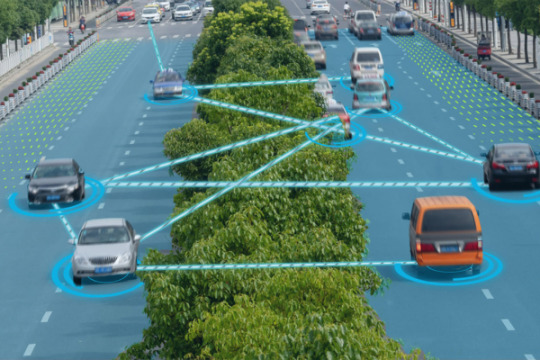
ADAS cameras’ types of sensors: To recognize traffic signs, road markings, pedestrians, and other vehicles, cameras are an essential part of ADAS. They offer precise color information and are particularly useful for object recognition and lane detection.
Radar: Radar sensors measure an object’s direction, speed, and distance from a moving vehicle using radio waves. In inclement weather, they come in quite handy since they can locate objects that are out of sight.
LiDAR: Light Detection and Ranging (LiDAR) sensors employ laser beams to create an extensive three-dimensional map of the region surrounding the vehicle. LiDAR is quite accurate in estimating distances and provides a high-resolution image of the surrounding area.
Ultrasonic Sensors: Ultrasonic sensors are widely used in low-speed maneuvers to help with parking, estimate object distance, and provide feedback to the driver
Sensor fusion — the process of combining data from multiple sensors—is crucial to overcoming the limitations of individual sensors. To reduce false positives and negatives and improve judgment, ADAS systems integrate data from multiple sensor types, each of which has pros and cons.
For example, even while cameras are highly accurate in recognizing things, they can struggle in low light or glare. Radar, on the other hand, is less detailed than cameras yet still functions well in inclement weather. By merging the data from both sensors, the system can compensate for the inadequacies of each one and provide a more reliable and accurate representation of the surroundings.
4. Difficulties with ADAS Sensor Fusion
While sensor fusion provides benefits, there are significant issues that need to be resolved. Combining data from several sensors requires sophisticated algorithms and strong processors. The precise and low-latency real-time processing of large amounts of data is a difficult task requiring sophisticated computing capabilities.
The sensors’ synchronization and calibration are also essential for a successful sensor fusion. All sensors need to be perfectly synced and aligned to facilitate trustworthy data integration and decision-making.
5. Integration of ADAS Data
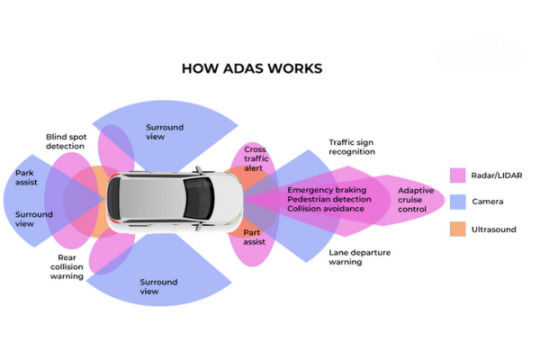
In ADAS, data integration goes beyond sensor fusion and combines information from several sensors. Furthermore, information from several automotive systems, including GPS, IMUs, and ECUs (Electronic Control Units), needs to be integrated.
It is feasible to fully comprehend the position, orientation, and dynamics of the vehicle in its setting by utilizing data from several systems and sensor inputs.
6. Operation of ADAS Sensor Fusion and Data Integration
The ADAS sensor fusion and data integration procedure can be broadly divided into the following steps:
Data collection: All of the car’s sensors are continuously taking in information about their environment. LiDAR scans the environment, cameras take pictures, radar finds objects and ultrasonic sensors measure distances.
Pre-processing: Raw data from sensors is first treated to remove noise, correct distortions, and give a standard coordinate system.
Object Detection and Tracking: Using computer vision and machine learning methods, the system detects and tracks objects in its environment. This step involves identifying people, vehicles, lane markers, traffic signs, and other significant objects.
Sensor Fusion: Data from all sensors is combined to create an accurate and comprehensive image of the surrounding region after objects have been discovered and tracked. This integration helps to dispel uncertainty and skepticism.
Environmental Perception: A real-time, comprehensive model of the environment surrounding the vehicle is produced using the combined data. The positions, speeds, and trajectories of numerous objects are included in this model.
Making decisions: Based on its perception of the surroundings, the ADAS system determines whether to assist the driver or to start automatic functions, such as adjusting the vehicle’s speed, steering, or braking to avoid collisions.
7. Benefits and Opportunities for ADAS Sensor Fusion and Data Integration
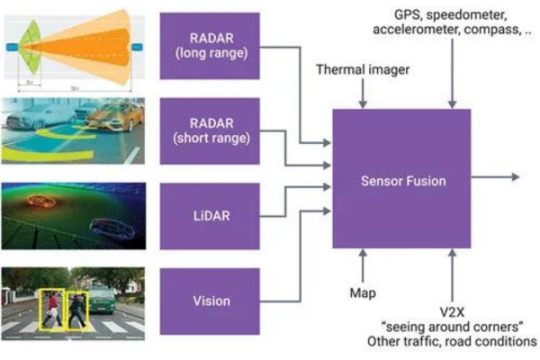
With so much promise, ADAS sensor fusion and data integration have already significantly increased road safety and driver comfort. By providing a more complete and accurate picture of the surroundings, ADAS systems can help prevent accidents, reduce traffic congestion, and improve overall road efficiency.
As technology advances, we might expect increasingly sophisticated algorithms and sensors to allow for greater degrees of autonomy, ultimately leading to fully autonomous vehicles.
Furthermore, the integration of Vehicle-to-Everything (V2X) connectivity and ADAS will enable cooperative systems where vehicles may exchange data with each other and the infrastructure for even greater safety and efficiency.
Conclusion:
ADAS sensor fusion and data integration have revolutionized the automobile industry, improving vehicle safety and paving the way for autonomous driving.
By combining data from multiple sensors and vehicle systems, ADAS can accurately identify the environment, make sound decisions, and assist drivers more effectively.
As technology advances, we may expect ADAS to play an increasingly vital role in the development of safer, more intelligent, and more effective mobility solutions for all drivers.
To explore our best VCU products and services, mail us at [email protected] or visit our website, Dorleco.com for further details.
0 notes